The winter sun in Lisbon in mid-January is piercing, still low in the sky, lighting the white marble and pastel-colored buildings with a golden glow at the end of the day. The sky is intensely blue, not quite Mediterranean, as Lisbon is on the Atlantic Ocean, but deep and solid. The trees were not yet in bloom but we found camellias and yellow wildflowers in abundance as we explored the hills east of the city.
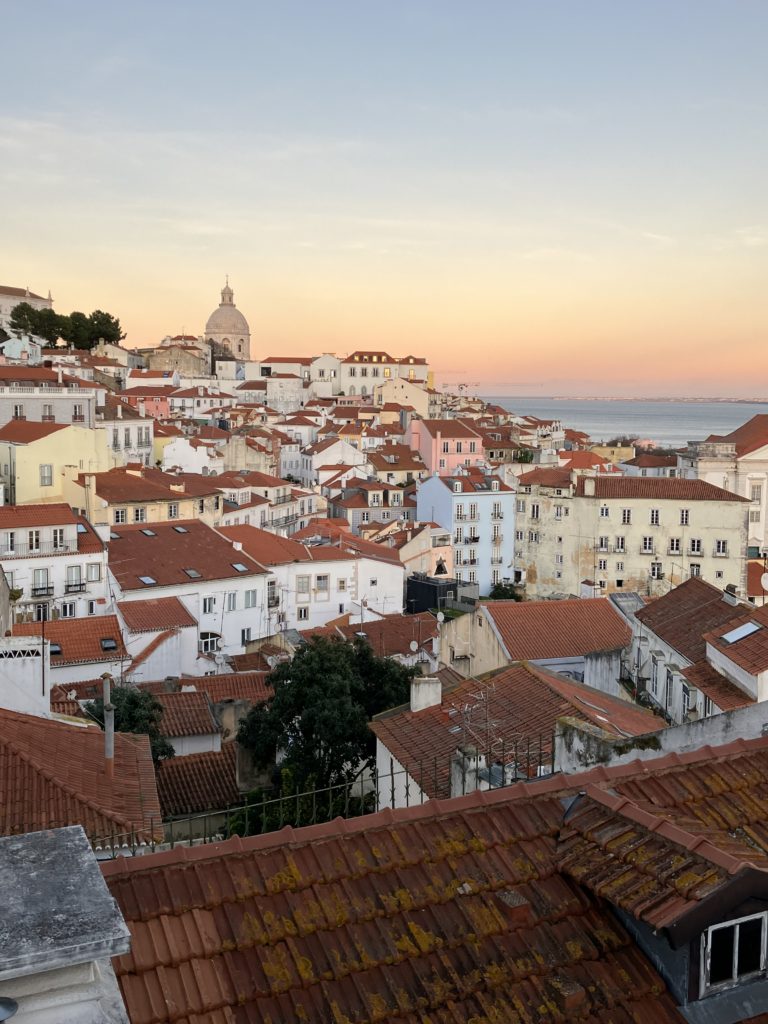
Doug and I arrived early on a Saturday morning. Our son, Alex, and his girlfriend, Sami, flew from Paris later in the afternoon. A dear friend made her apartment in the up and coming Chiado area available to us. It is situated near wonderful restaurants, shopping, narrow roadways, cobbled streets with decorative designs on sidewalks and in the large squares for gatherings. Lisbon’s skyline is replete with church steeples, Castle St. Jorge on the hill above the city proper, three and four-story narrow houses often with laundry hanging on balconies, orangish-red stucco tile roofs. The Tagus River and the Atlantic ocean border the city to the south in full view of the defensive castle.
We soon developed a rhythm to our days. Quiet mornings at the apartment with coffee and croissants (Alex may have already run ten miles while Doug is up early for his walks), a check on the day’s itinerary, then out the door to begin exploring.
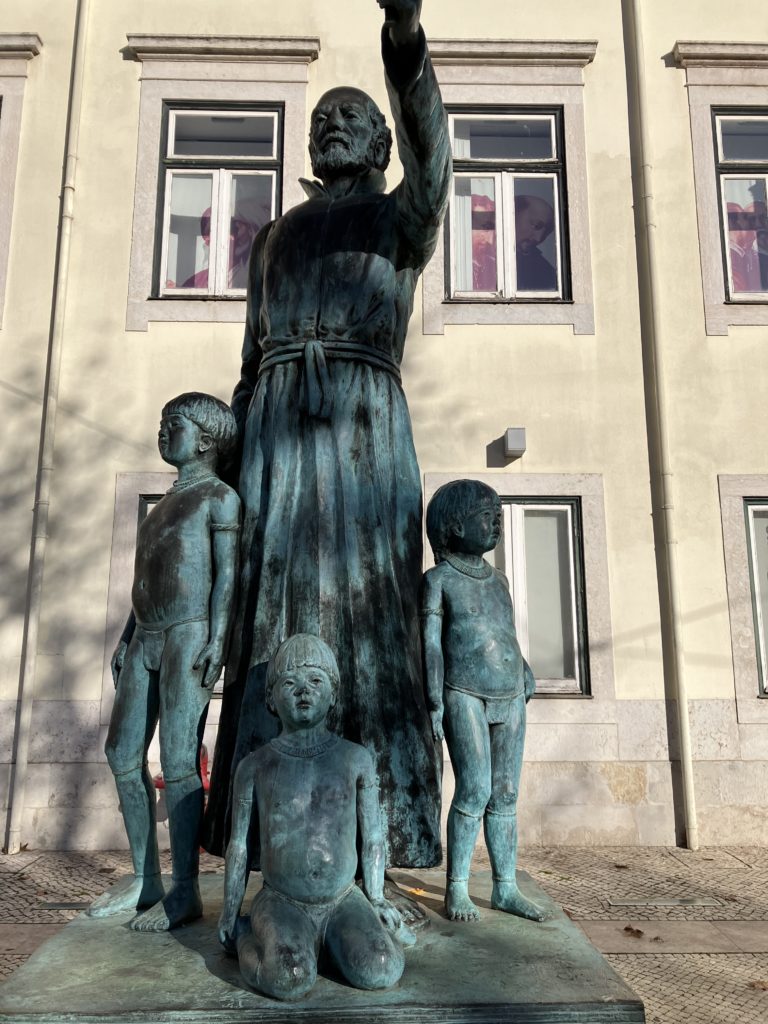
As we often do to get acquainted with a new area, we went on a walking tour. We started at San Roque, originally a Jesuit church (until the Jesuits were expelled from Portugal), plain on the outside, outrageously ornate Baroque-style (with gold leaf inlay on most every surface) on the inside. Next to the church are the headquarters of Santa Casa di Misericordia (House of Mercy), which provides many social services to the people of Lisbon. Our local guide provided both official “tour” information and bits of local myth/fables about the area, all very entertaining. We stopped at the world’s oldest continuous book store, several large commercial squares or plazas, and an area (once outside the wall that surrounded Lisbon) where journalists gathered until the 1930s censorship leading up to World War II (Portugal remained neutral) and the forty-year authoritarian reign of Antonio Salazar.
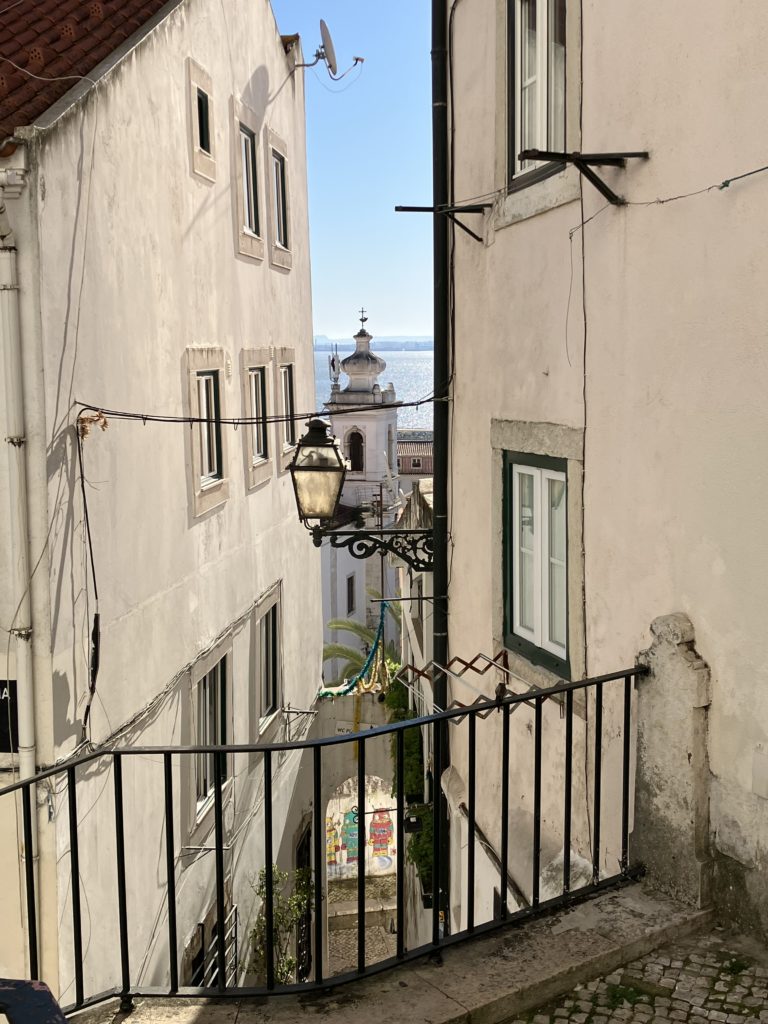
Alex insisted we test the famous egg custards at several different shops to compare to the most-well known stand near Belem. Hard to decide, cardamon or cinnamon? We saw street performers singing opera, fado (traditional Portuguese music usually accompanied by 12-string guitar), dancing. Coffee shops, pastry shops, Michelin-starred restaurants are a stable, it seems, throughout the area.
Monday morning we walked the narrow, hilly streets and buildings and houses covered with murals of Bairro Alto (upper district) to the Castle St. George, in existence since 1147 but with evidence of residences during the Iron Age (7th-4th century B.C.), the Moorish Quarter (11th-12th century), and the Palace (15th-18th century). The stone castle covers the entire hilltop with the city of Lisbon, ocean, river, and hills in full splendor below. The walls are extremely thick and multi-leveled, a moat (now filled with grass instead of water) surrounds the grounds, the 10 towers are strategically placed to have 360 degree views, the numerous turrets have slits for various weaponry, the form of defense changing as the potential attackers changed over the years. Turquoise-feathered peacocks roam the grounds, the brown hens protected by the strutting males. The history of Portugal is long and unique: unifying under one language in the twelfth century, allied with Britain, fighting off many attempts from Spain and Castile. The structure of their defense system can attest to their successes.
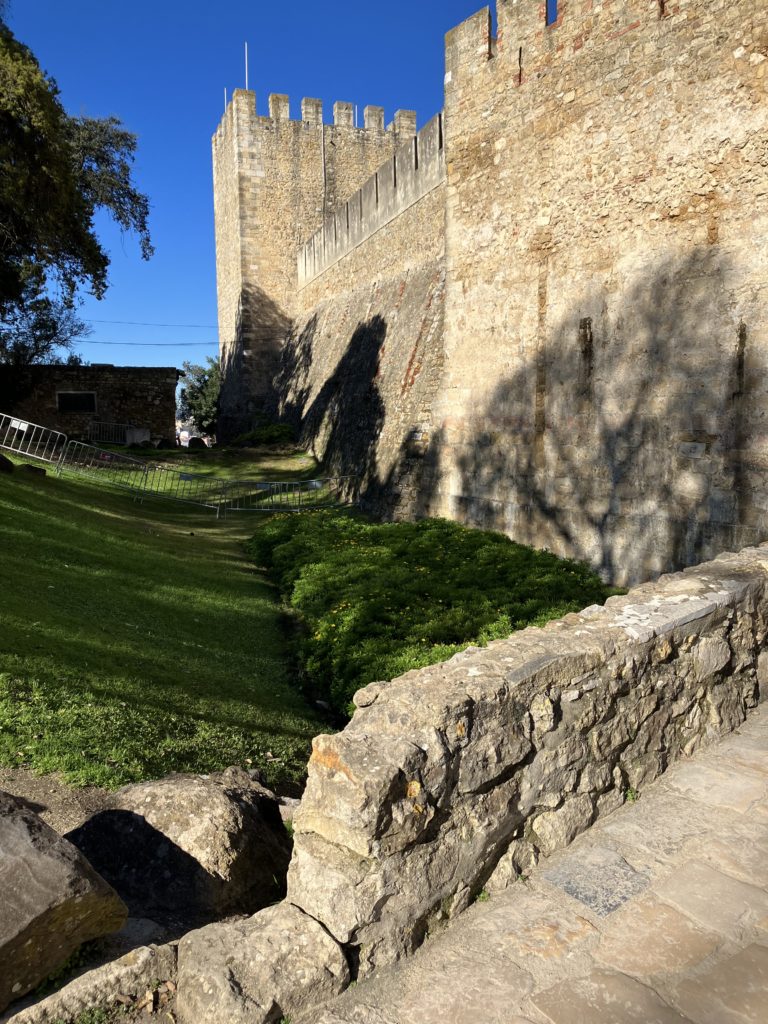
We ended the afternoon with port tasting, learning that wines can only have the appellation “port” if the grapes used are grown in the Douro River valley (which Alex says is a must-do for our next trip to this region). At the most, I’ll drink one glass of wine: tasting five different ports was a stretch for me, but fun to learn more about this sweet, delicious treat!
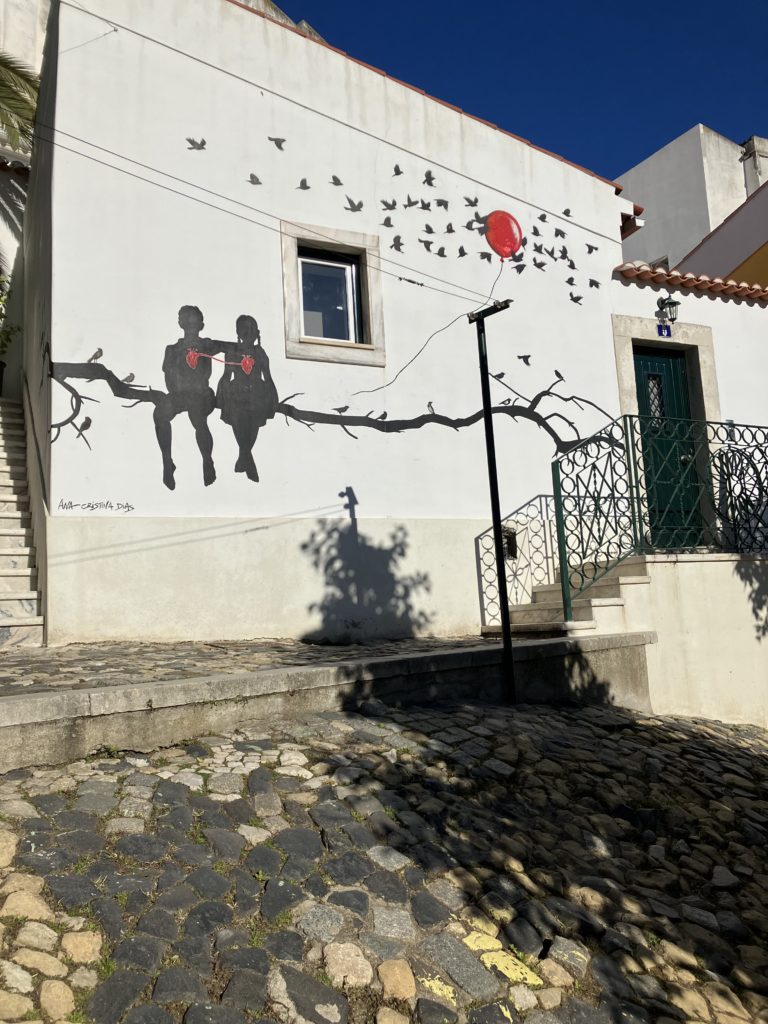
Tuesday was our all-day tour into the countryside around Lisbon. First up was Sintra and the Pena Palace, an outlandish almost garish palace high on another hill overlooking the valleys and ocean below. Once a monastery, King Ferdinand II in the nineteenth century spent 15 years designing and having built the palace. The brightly-colored tiles (red, yellow, green, blue) are a beacon for any traveler. The grounds are lush and peaceful, supposedly with a thousand or so types of trees, shrubs, and flowers. It was freezing that morning with the clear sky and windy breeze; no heat in the palace rooms, etc. While most of them were clearly not modernized, they did have several ensuite bathrooms and a spacious “cooks” kitchen.
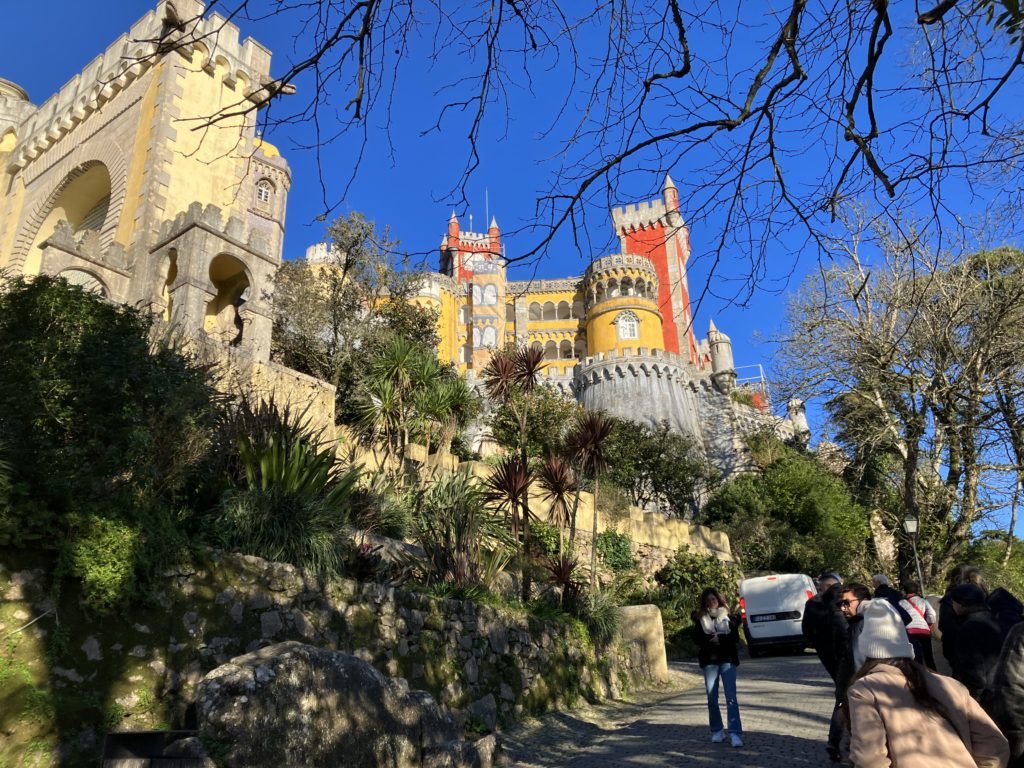
We drove past “white villages” (so called because the houses and buildings are white stucco to help keep them cool in summer) to the western-most point of continental Europe, Cabo da Roca. It reminded me of the northern California coast, well-swept, rocky hills, yellow wildflowers, and a horizon that stretched for thousands of miles. I could imagine being a sailor wondering whether the earth was indeed flat, when might he return home, if ever. Beautiful. Lunch was fresh fish (flounder and snapper, which the chef proudly showed us before they were cooked) in the town of Cascais, almost as famous now for its expat community and wealthy celebrities, as its moniker “the Portuguese Rivera.”
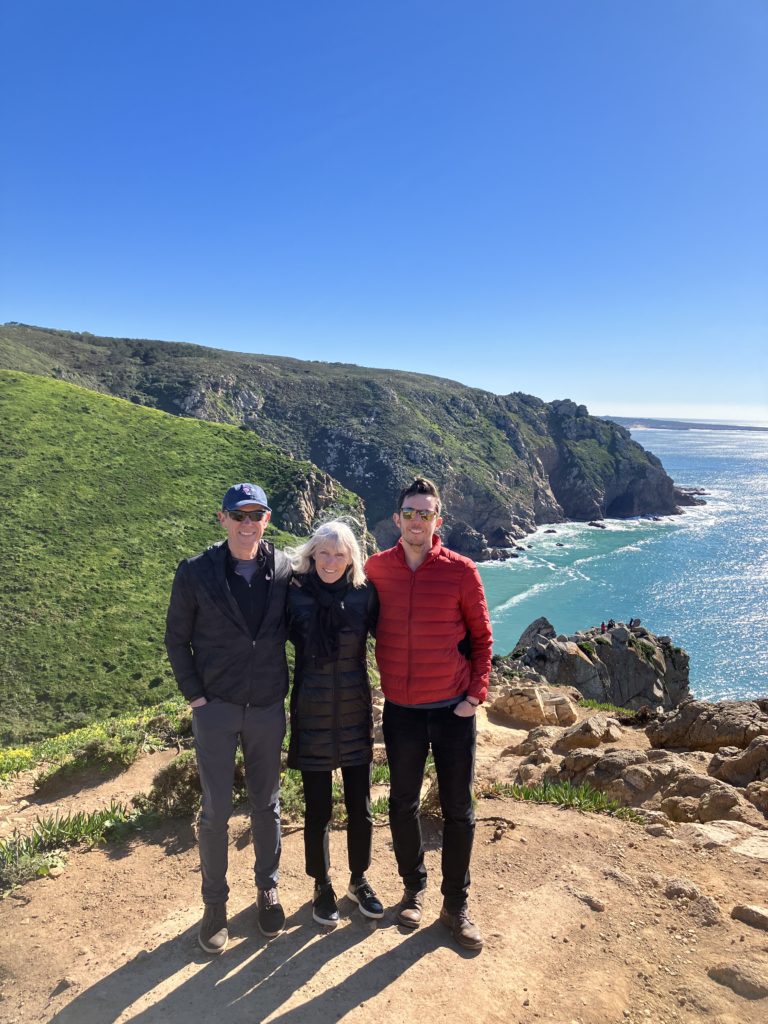
I’d wanted to see the stain-glass windows in the southern morning light of Jeronimo Monastery along the coast of Lisbon. Doug and I walked five miles from the apartment to the monastery, only to realize we needed tickets. Nevertheless, the outside was worth the visit: incredibly detailed and many carvings on the huge structure. Not what one typically thinks of a monastery with the silent monks wearing brown frocks, walking quietly in the gardens.
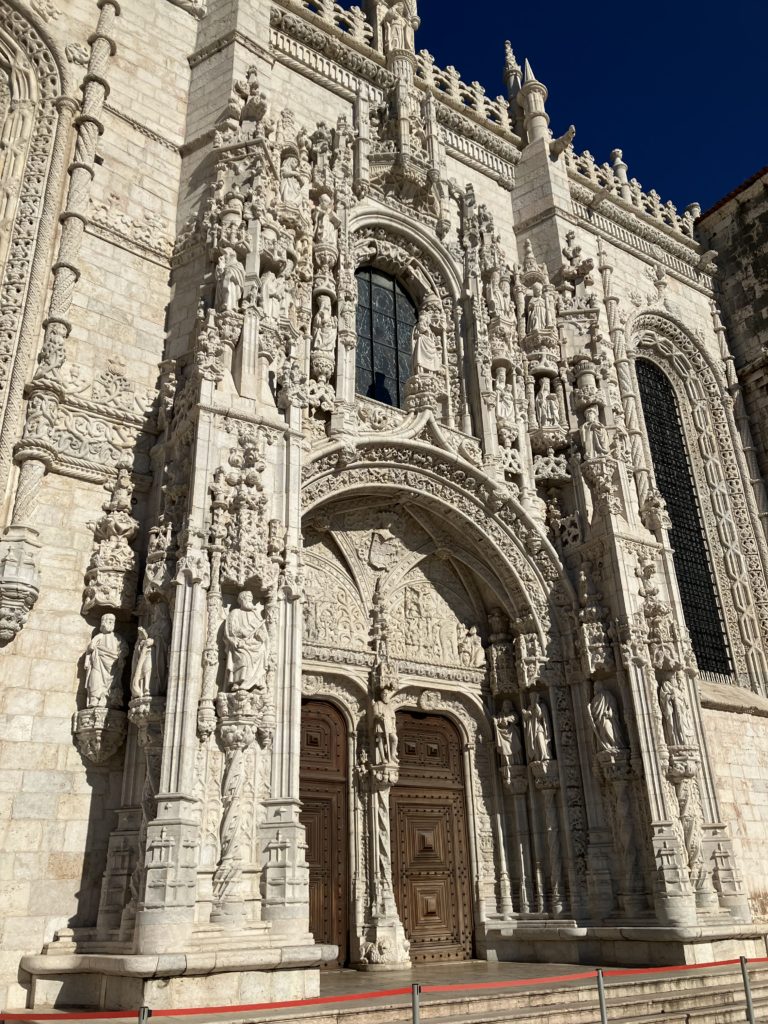
We ate and ate: pastries and bread (so good in Europe), octopus, oysters, lobster, and unnamed fish caught just off shore. We drank wine: reds and whites and green (yes!). We walked and walked. I missed running but wasn’t comfortable on the hilly cobbled streets in the wind. Unusual for me as I generally like to run in order to explore new places—maybe my body needed a break?
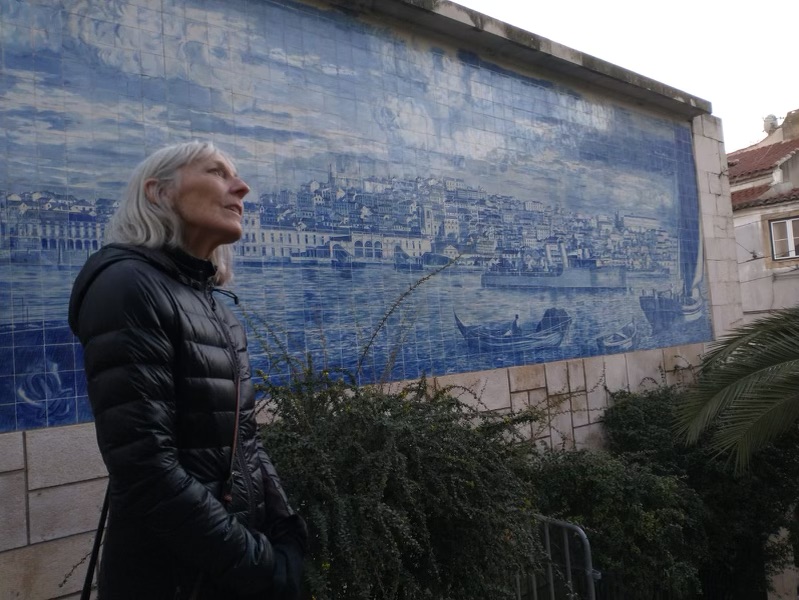
The best part of the vacation of course was spending time with Alex and Sami. I miss having them closer but we have more opportunities for adventures in Europe. Geneva in June before Doug and I spend a week hiking around Mont Blanc!
I am so grateful for my friend, Lisa, insisting we stay in her apartment in Chiado. The trip came together easily and while it was cold, the sun in Lisbon in winter is magical.